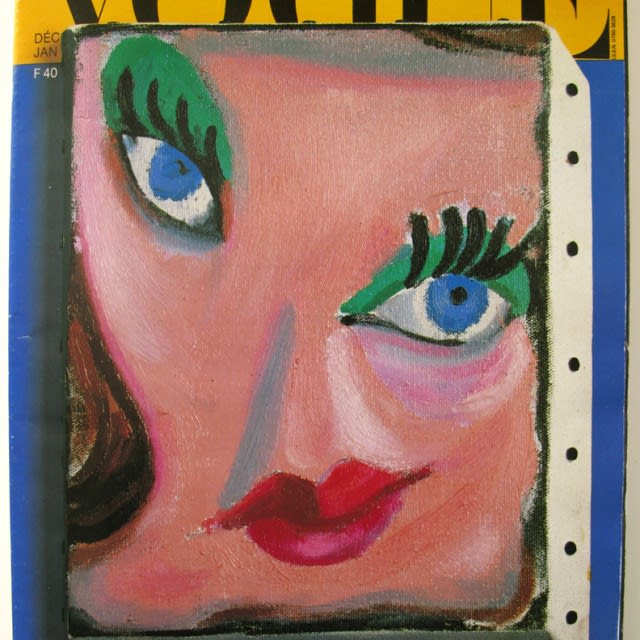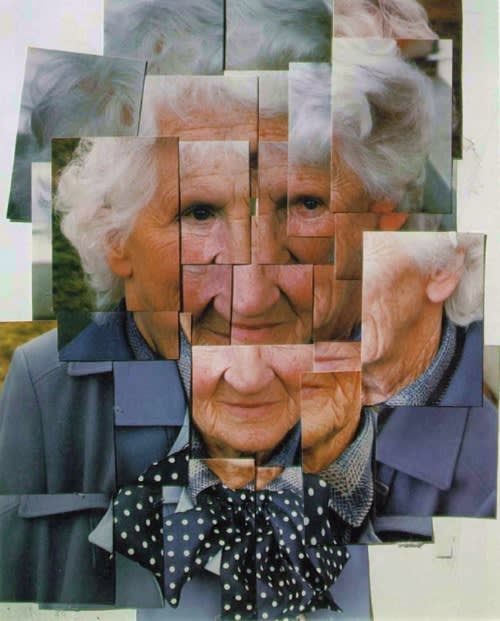David Hockney calls himself a scophophile…a voyeur…but his images are more intimate than sexual. His view of the world is large, his perspective enormous.
In the 1970s, Hockney began to look through at the world through the lens of a camera. Dr. Edwin Land had just introduced the Polaroid to the world and Hockney used it in a way that only an artist with incredible vision could imagine. He took Polaroids of the same subject, from different angles and at different times, creating collages that gave the finished works a cubist perspective.
He called his photocollages “Joiners”, and had an exhibition of his photos in a 1982 New York show called, Drawing with a Camera. The exhibit led, not only to other exhibits, but also to an invitation to speak about photography at London’s Victoria and Albert Museum.
During this time, Hockney stopped painting for a while and concentrated on studying the perspective he saw through the camera lens. When he began painting again, in 1984, Hockney created works that mirrored the viewpoints he saw when he looked through the camera lens, like Tyler Dining Room, which can be seen in our gallery.
That same year, Hockney traveled from his home in Los Angeles to Mexico City for the opening of an exhibition of his work at the Museo Rufino Tamayo. He made it to the show, but his car broke down near the Hotel Romano Angeles, where he stayed and sketched before returning home. He went back to the hotel a few months later, accompanied by master printer, Kenneth Tyler.
The trip inspired Hockney to continue to paint and work on his Moving Focus series, using a new printing technique, developed by Tyler, that used layers of Mylar sheets to get rich color after each single color sheet was transferred and printed from aluminum plates.
Hockney was asked to do a cover and story for the December 1985 Paris issue of Vogue. The magazine included a 41-page spread of Hockney’s photocollages and the cubist-style work that they inspired. The cover of the Paris Vogue is a cubist-like image of his friend and muse, Celia Britwell. Celia with Green Hat, craeted just before the Vogue cover, is for sale in our gallery.
Hockney has always been interested in using new technology in his work, and added a Pentax 35mm and a video camera to his tool kit. These days, he also paints with an iPad.
His interest in using the camera led him to believe that European artists, like Vermeer and Ingres, and artists who were painting as early as the mid-15th century, were using mirrors and lenses to project their subjects on to flat surfaces to help them create their gorgeous, realistic paintings. Hockney’s book, Secret Knowledge: Rediscovering the Lost Techniques of the Old Masters, was published in 2001, and caused a great deal of controversy in the art world.
Charlie Rose interviewed Hockney in New York, a few days before a symposium was held about the book. A mischievous Hockney, cigarette in hand, explained to Rose how lenses were used and why he thought artists were so secretive about using them.
The symposium was held at the New York Institute for the Humanities at NYU, called Art and Optics: Toward an Evaluation of David Hockney’s New Theories Regarding Opticality in Western Painting of the Past 600 Years. Many Art historians, and others in the packed auditorium were not happy with Hockney, but his point is that the Old Masters weren’t “cheating”, they were just using the tools at their disposal to make great paintings.
Hockney is back in his Hollywood Hills home. His solo exhibit, at the L.A. Louver gallery in Venice, is called David Hockney: Painting and Photography. It’s an impressive collection of work that makes viewers feel like they are part of each piece. Hockney says that he doesn’t go out much, but he doesn’t have to. He’s still making magic in his Hollywood Hills studio.








